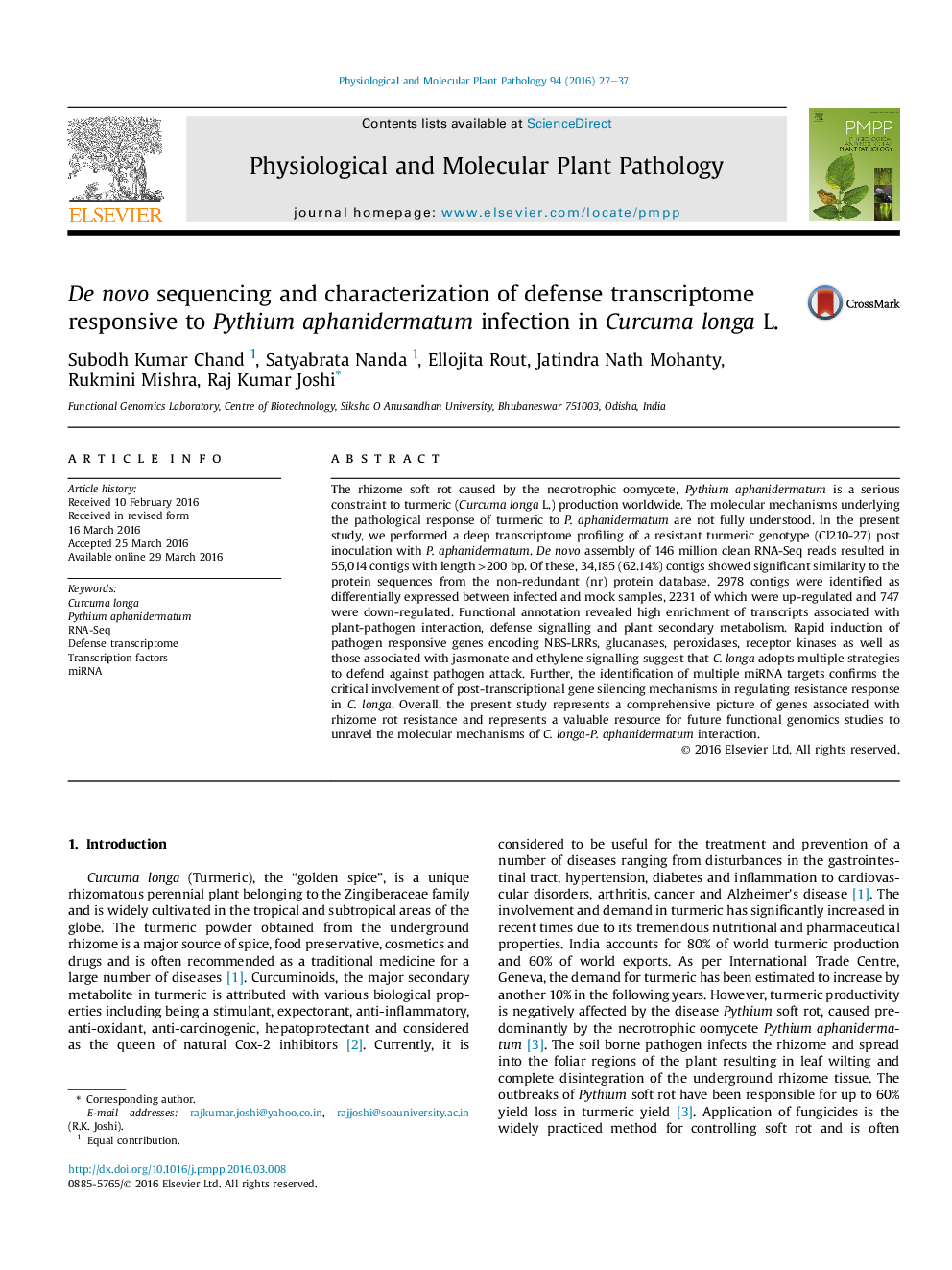| کد مقاله | کد نشریه | سال انتشار | مقاله انگلیسی | نسخه تمام متن |
|---|---|---|---|---|
| 2836193 | 1570845 | 2016 | 11 صفحه PDF | دانلود رایگان |

• Defense transcriptomes responsive to Pythium aphanidermatum were analyzed in Curcuma longa.
• 2978 transcripts were differentially expressed in response to P. aphanidermatum infection.
• DEGs encoding NBS-LRRs, receptor kinases and WRKYs were highly enriched during pathogen attack.
• ET and JA signaling constitute a synergistic defense response against P. aphanidermatum.
• Counter defense action in turmeric involved terpinoids and polyphenol biosynthesis.
The rhizome soft rot caused by the necrotrophic oomycete, Pythium aphanidermatum is a serious constraint to turmeric (Curcuma longa L.) production worldwide. The molecular mechanisms underlying the pathological response of turmeric to P. aphanidermatum are not fully understood. In the present study, we performed a deep transcriptome profiling of a resistant turmeric genotype (Cl210-27) post inoculation with P. aphanidermatum. De novo assembly of 146 million clean RNA-Seq reads resulted in 55,014 contigs with length >200 bp. Of these, 34,185 (62.14%) contigs showed significant similarity to the protein sequences from the non-redundant (nr) protein database. 2978 contigs were identified as differentially expressed between infected and mock samples, 2231 of which were up-regulated and 747 were down-regulated. Functional annotation revealed high enrichment of transcripts associated with plant-pathogen interaction, defense signalling and plant secondary metabolism. Rapid induction of pathogen responsive genes encoding NBS-LRRs, glucanases, peroxidases, receptor kinases as well as those associated with jasmonate and ethylene signalling suggest that C. longa adopts multiple strategies to defend against pathogen attack. Further, the identification of multiple miRNA targets confirms the critical involvement of post-transcriptional gene silencing mechanisms in regulating resistance response in C. longa. Overall, the present study represents a comprehensive picture of genes associated with rhizome rot resistance and represents a valuable resource for future functional genomics studies to unravel the molecular mechanisms of C. longa-P. aphanidermatum interaction.
Journal: Physiological and Molecular Plant Pathology - Volume 94, April 2016, Pages 27–37